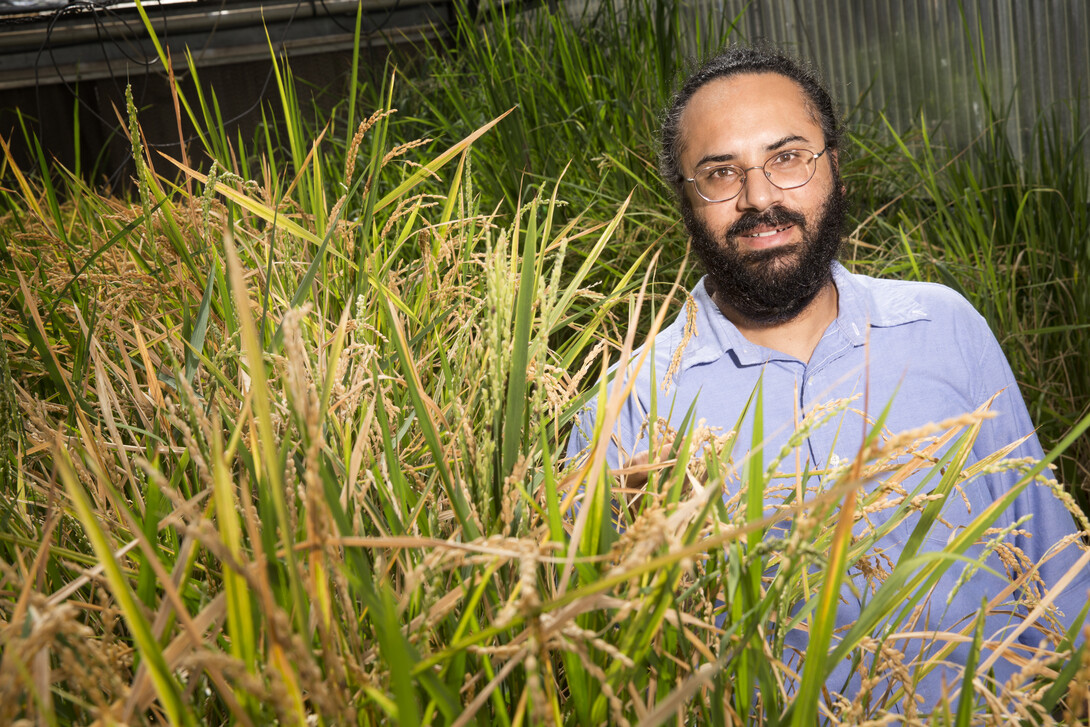
Rice is the foundation for half the world population’s diet. But rice yields are declining in an increasingly saline environment, costing the industry more than $12 billion annually.
UNL plant molecular physiologist Harkamal Walia and collaborators are using powerful new tools to study rice varieties to discover new sources of salt tolerance.
Most rice production is irrigated. After plants use the water or it evaporates, salt remains in the soil, builds up over time and hinders plant growth and productivity.
“It’s already a huge problem, and it’s going to become a bigger problem, especially with climate change. There’s reason to believe that farmers’ incomes will go down,” Walia said, adding that the situation is particularly critical for smallholder farmers in Asia surviving on $2 a day.
With a $2 million grant from the National Science Foundation, Walia and his team are looking for salt-tolerant rice genes. First, the team uses a sophisticated image-based phenotyping system that takes pictures of rice plants growing in saline conditions over days. Then software scans the images to detect differences among varieties that are impossible to quantify with the naked eye.
Matching slight visual variations with differences in each plant’s genetic makeup will help the team find those genes responsible for salt tolerance. Breeders can use the information to develop salt-tolerant varieties.
“There will be tons of data that need to be analyzed and computational models developed for understanding salinity response at the whole genome level,” Walia said. “That requires a level of expertise that would be very hard to find in a single lab.”
His collaborators include UNL statistician Dong Wang, plant breeder Aaron Lorenz and computer scientist Ashok Samal, as well as colleagues at the Australian Centre for Plant Functional Genomics, Cornell University and the International Rice Research Institute in the Philippines. A colleague at Arkansas State University will coordinate training of predominantly minority students in the techniques.
Because crops share many genes, the team’s findings also may improve understanding of salt tolerance in other cereals, such as wheat and corn.








